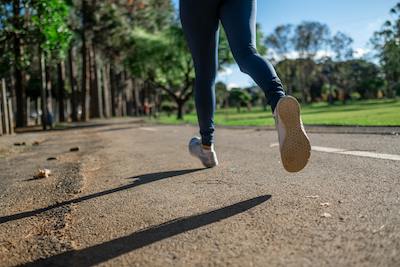- The Basics of Weight Loss
- Walking: A Gentle Path to Weight Loss
- Running: The Fast Track to Caloric Burn
- Walking vs Running: Which is Better for Weight Loss?
When it comes to weight loss, physical activity is a crucial component of any successful plan. Among the many options available, walking and running stand out for their simplicity, accessibility, and numerous health benefits. But which is more effective for weight loss? This comprehensive guide will explore the advantages and considerations of both walking and running, helping you decide the best approach for your fitness and weight loss goals.
The Basics of Weight Loss
Before diving into the specifics of walking and running, it’s essential to understand the fundamental principle behind weight loss: calorie deficit. To lose weight, you must burn more calories than you consume. Both walking and running can contribute to creating this calorie deficit, but they do so at different intensities and paces.
Walking: A Gentle Path to Weight Loss
Walking is a low-impact, moderate-intensity exercise that is suitable for almost everyone. It’s particularly beneficial for those new to exercise, dealing with joint pain, or managing chronic conditions.
Benefits of Walking for Weight Loss
- Accessibility: Walking doesn’t require special equipment or a gym membership. All you need is a comfortable pair of shoes.
- Lower Risk of Injury: Being a low-impact exercise, walking carries a lower risk of injury compared to high-impact activities.
- Sustainability: Many people find it easier to incorporate walking into their daily routine, making it a sustainable part of a long-term weight loss strategy.
How to Maximize Weight Loss Through Walking
- Increase Intensity: Incorporate hills or speed intervals to increase your heart rate and calorie burn.
- Consistency is Key: Aim for at least 150 minutes of moderate-intensity walking per week, as recommended by the American Heart Association.
- Combine with a Healthy Diet: Remember, exercise is most effective for weight loss when paired with a nutritious diet.
Running: The Fast Track to Caloric Burn
Running is a high-impact, high-intensity exercise that can significantly increase calorie expenditure, making it a potent tool for weight loss.
Benefits of Running for Weight Loss
- Efficiency: Running burns more calories per minute than walking, offering a quicker way to create a significant calorie deficit.
- Afterburn Effect: High-intensity exercises like running can lead to a higher afterburn effect, where your body continues to burn calories at an elevated rate after the exercise is completed.
- Mental Health Benefits: Running has been shown to improve mood and mental well-being, which can be beneficial for maintaining motivation for weight loss.
How to Maximize Weight Loss Through Running
- Vary Your Workouts: Mix long runs, sprints, and interval training to prevent plateaus and keep your body challenged.
- Rest and Recovery: Given the high-impact nature of running, ensure you allow adequate recovery time to prevent injuries.
- Mind Your Diet: As with walking, combining running with a healthy diet is crucial for optimal weight loss results.
Walking vs Running: Which is Better for Weight Loss?
The choice between walking and running ultimately depends on your personal preferences, fitness level, and health considerations. Running may offer a faster route to weight loss due to its higher calorie burn rate, but walking is more accessible and carries a lower risk of injury.
A Balanced Approach
For many, a combination of walking and running may be the best approach. This allows for the high-intensity benefits of running while providing lower-impact days of walking for recovery and sustainability.
One intriguing aspect of the walking vs. running debate that few people may know about involves the efficiency of energy expenditure and how the body adapts to these exercises over time. Specifically, it’s about the concept of “running economy” and “walking economy.”
Running Economy and Walking Economy
Running Economy: This refers to how efficiently a person uses oxygen while running at a steady pace. Interestingly, as runners train more, their bodies become more efficient at running, meaning they use less energy (or fewer calories) to run the same distances as they did before training. This adaptation can be a double-edged sword for weight loss because it means a seasoned runner will burn fewer calories running the same distance at the same pace than someone who is less trained.
Walking Economy: Walking, particularly at a moderate pace, does not undergo the same level of adaptation. The body remains relatively inefficient at walking, which is actually beneficial for weight loss. This inefficiency means that even regular walkers will continue to burn a relatively consistent number of calories for the same distance, regardless of their fitness level.
The Paradox of Efficiency
This difference highlights a paradox: while becoming a more efficient runner is excellent for athletic performance, it might not be as beneficial for someone whose primary goal is weight loss. In contrast, the relative inefficiency of walking can maintain its effectiveness as a weight loss activity over time.
Energy Expenditure at Different Speeds
Another less-known fact is the relationship between speed and energy expenditure. There’s a “sweet spot” in walking speed (usually between 3 to 4 miles per hour) where walking is almost as efficient as running in terms of calories burned per distance. However, once you exceed this speed, the energy cost of walking increases significantly, making fast walking (or power walking) a highly effective exercise for weight loss, rivaling that of running.
Impact on Appetite
Finally, the effect of walking and running on appetite varies, which can influence weight loss. Some studies suggest that high-intensity exercise like running can temporarily suppress appetite more than low-intensity exercise like walking. However, the long-term effects on appetite regulation and weight loss between these two activities are still a subject of ongoing research.
These nuances offer a more complex view of the walking vs. running discussion, especially concerning weight loss and fitness. They highlight the importance of choosing an exercise program that aligns with one’s health goals, lifestyle, and preferences while considering the body’s adaptations to increased physical activity.
Shocking Results: How Walking Can Outpace Running in the Long-Term Weight Loss Race
When it comes to shedding those extra pounds, we’ve been led to believe that more sweat and tears equal more success. The images of drenched gym shirts and the allure of high-intensity workouts have dominated our fitness aspirations. But what if the secret to long-term weight loss isn’t found on the race track but on the walking trail? Prepare to be amazed by how the humble act of walking can actually sprint ahead in the marathon of weight loss and keep the pounds off for good.
The Slow Burn Advantage
Walking, often overshadowed by its more intense counterpart, running, has emerged from the shadows to take the lead in the weight loss journey. The magic of walking lies in its sustainability and its ability to ignite the body’s fat-burning mechanisms over time. Unlike running, which demands high levels of exertion and recovery time, walking can be a daily habit, making it easier to stick with in the long run.
Less is More
In our quest for quick results, it’s easy to overlook the power of moderation. Walking is a low-impact exercise, which means it’s gentler on the joints and reduces the risk of injury. This allows for more consistent activity and minimizes downtime. Moreover, walking can fit into any schedule. A stroll during lunch, walking meetings, or an evening walk with the family can add up to significant calorie burn and fitness gains without the need for a complete lifestyle overhaul.
Losing Weight Before You Walk
Any weight you lose before you start a walking routine is going to lesson stress on your body and make your walk much more enjoyable. Even losing 10 pounds is going to make a huge difference.
This dietary supplement might be just what you need.
Or you could start with The Smoothie Diet
Walking: The Stress Buster
Stress and weight gain often walk hand in hand. High-intensity workouts can sometimes add to this stress, releasing cortisol, which is linked to belly fat. Walking, on the other hand, is a fantastic stress reliever. It promotes the release of endorphins, enhancing mood and decreasing stress levels, making it easier to maintain a healthy eating plan and a consistent exercise routine.
A Steady Pace Wins the Race
The allure of fast results from running or high-intensity workouts is hard to resist, but the beauty of walking lies in its steady, gradual progress. This slow and steady approach fosters patience and a positive relationship with our bodies. It encourages a lifestyle change rather than a quick fix, leading to more significant and lasting weight loss results.
Community and Connection
Walking also offers opportunities for social connections, which can be incredibly motivating. Joining a walking group or simply walking with friends or family can turn exercise into a social activity, making it more enjoyable and sustainable. These connections not only support our physical health but our mental well-being too, creating a holistic approach to weight loss.
Conclusion
Both walking and running are effective exercises for weight loss when combined with a healthy diet and a consistent exercise routine. Choosing the right activity—or a combination of both—depends on your current fitness level, health status, and personal preferences. Remember, the best exercise for weight loss is the one you can enjoy and stick with over the long term.














